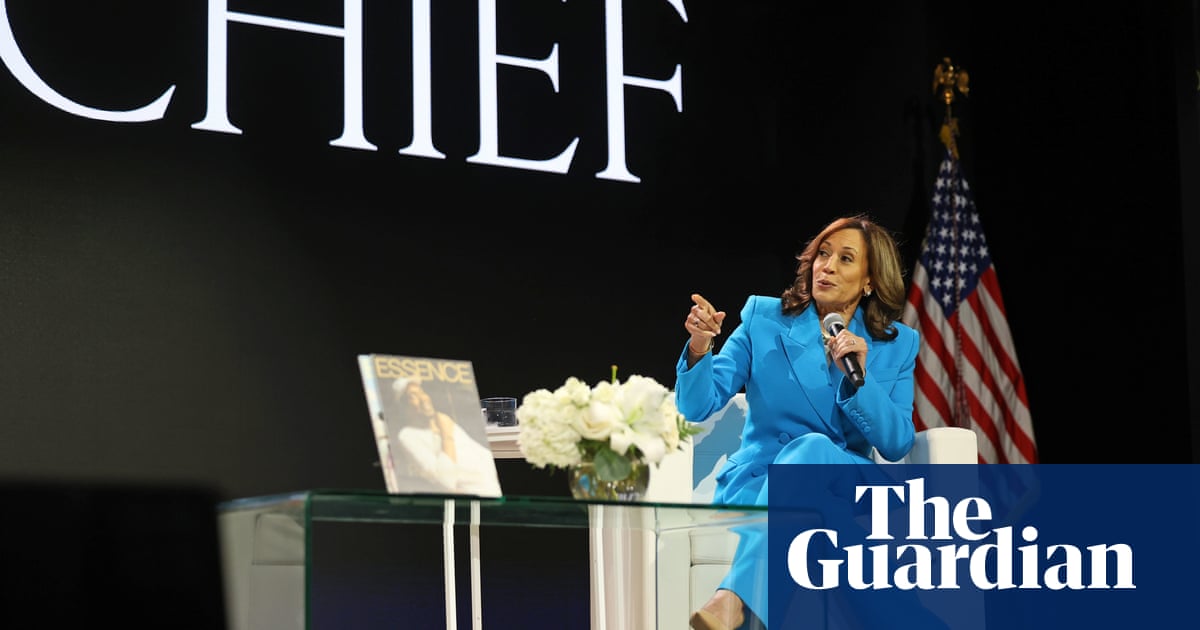
n a year where the global fashion industry has faced its biggest ever racial reckoning Kamala Harris, the first black and south Asian vice-president, has elevated the names of black designers by wearing their clothes on the biggest public stage possible.
By wearing fashion labels Pyer Moss, Christopher John Rogers and Sergio Hudson during last week’s inauguration events, Harris was aligning the new administration’s commitment to diversity with the fashion industry’s attempt to move past systemic, historic racism into a new era. A new era where designers of color get the same opportunities that their white counterparts have had for years.
“When it comes to inauguration events, black designers have been almost exclusively absent,” said the author Ronda Racha Penrice, “so it was nice to discover that the fabulous outfits [were] created by black designers.”
The concept of “the new” was seen directly on Tuesday when Harris attended an event paying tribute to those lost to the pandemic. She wore a camel color coat featuring a distinctive water design on the back. “The wave means ‘a new wave’,” said the designer Kerby Jean-Raymond, owner of Pyer Moss, who thought the symbol could be read in the context of the administration being unafraid to confront America’s racist past.
“[The wave] made me think of the Atlantic Ocean,” said Prof Eric Darnell Pritchard, author of Fashioning Lives. “As a descendant of enslaved African people, stolen and taken over the Atlantic, I thought immediately of those ancestors.”
This interpretation chimes with a through thread of Pyer Moss’s previous fashion collections. They have thematically shone a light on unheralded black history and erasure or racial identities, like black cowboys or the musical pioneer Sister Rosetta Tharpe.
This celebration of the individual is something that Pyer Moss has in common with Christopher John Rogers, whose ultraviolet purple coat Harris wore during Wednesday’s swearing in ceremony.
Rogers, like Sergio Hudson – the designer of Harris’s black tux and sequin dress she wore for the evening inauguration celebrations – have southern roots from Baton Rouge, Louisiana, and Columbia, South Carolina, respectively. “I feel fairly certain that [Rogers and Hudson] have come across stylish black church women,” said Racha Penrice. “There is a high drama, but buttoned-up simplicity and sophistication in each man’s work that I associated with Black southern women.”
Rogers’ powerfully bold color palette and use of extreme angles, speak to this high drama and also to the importance of radical individualism.
“There’s so much vitriol and pessimism in the air towards individuals that don’t fit certain molds or performative expectations,” he told the Guardian last year. “So it’s nice to combat that with true expressions of self, in whatever form that takes. The most effective in some instances is radical, boisterous personal style.”
Harris’s own personal style was recently picked apart by others when her Vogue cover became, instead of a historic moment, a conversation about the loss of agency women of color face in the public eye. But what did Harris and her team learn from the experience? “She probably learned that she has to set the directive extremely strictly,” said the fashion historian Darnell-Jamal Lisby. Indeed, her wardrobe around the inauguration was filled with intent.
Experts believe it is Harris will do more of in the future, though with caveats. Unlike the former first lady Michelle Obama, with whom Harris shared an outfit designed by Sergio Hudson, the vice-president has less sartorial freedom.
“I can foresee VP Harris receiving a certain level of backlash if she were to use fashion in the same way as Flotus,” said Lisby “because at the end of the day she is a politician … “[Harris] has to walk a narrow line, because if the public were to be distracted by her style it’d be difficult for her to really enact what she wants to get done.”
For the designers worn at the inauguration the exposure should vastly increase the reach of their brands. “Representation of any fashion brand during these sacred ceremonies and political events gives them an exponential boost in recognition and profitability,” said Lisby.
Or at least that is what should happen. If it doesn’t it will probably be a reflection of the ongoing race issues at the core of the industry.
“This will highlight where the fashion industry and its consumers will have serious work to do to address anti-blackness and how it buttresses economic inequality for black designers and fashion brands,” said Darnell Pritchard.












